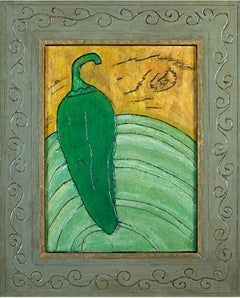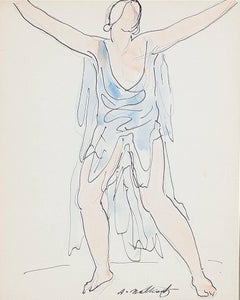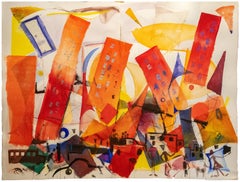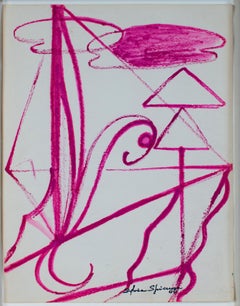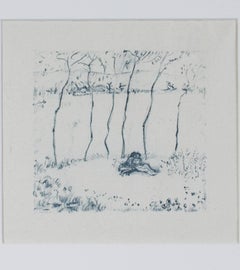Wisconsin - Art
2010s Outsider Art Wisconsin - Art
Wood, Oil
2010s Wisconsin - Art
Photographic Paper
1920s American Modern Wisconsin - Art
Paper, Ink, Watercolor, Graphite
Early 2000s Abstract Wisconsin - Art
Paper, Watercolor, Laid Paper, Tissue Paper
1950s American Modern Wisconsin - Art
Paper, Ink
Early 1900s Wisconsin - Art
Lithograph
1970s Pop Art Wisconsin - Art
Etching
2010s Contemporary Wisconsin - Art
Canvas, Photographic Film, Archival Ink, Inkjet, Archival Pigment
19th Century Other Art Style Wisconsin - Art
Ink, Tempera, Laid Paper
2010s Contemporary Wisconsin - Art
Photographic Paper
1910s American Realist Wisconsin - Art
Lithograph, Stencil, Ink
1990s Contemporary Wisconsin - Art
Canvas, Acrylic, Board
2010s Art Deco Wisconsin - Art
Paper, Charcoal
1990s Contemporary Wisconsin - Art
Ink
1940s Expressionist Wisconsin - Art
Canvas, Oil
2010s Contemporary Wisconsin - Art
Mixed Media, Ink, Acrylic, Watercolor
19th Century Folk Art Wisconsin - Art
Leather, Wood
2010s Contemporary Wisconsin - Art
Canvas, Acrylic
Early 1900s American Realist Wisconsin - Art
Lithograph, Ink
2010s Abstract Wisconsin - Art
Canvas, Oil
1880s Academic Wisconsin - Art
Lithograph
2010s Other Art Style Wisconsin - Art
Gold Leaf
21st Century and Contemporary Contemporary Wisconsin - Art
Paper, Watercolor
2010s Wisconsin - Art
Ink, Mixed Media, Watercolor
Early 2000s Contemporary Wisconsin - Art
Paper, Acrylic
1830s Academic Wisconsin - Art
Lithograph
Early 2000s Contemporary Wisconsin - Art
Canvas, Mixed Media, Acrylic
Early 2000s Contemporary Wisconsin - Art
Jute, Oil
1960s Wisconsin - Art
Stoneware, Glaze
1990s American Impressionist Wisconsin - Art
Canvas, Acrylic
Early 2000s Contemporary Wisconsin - Art
Watercolor
1970s Wisconsin - Art
Etching, Aquatint, Carbon Pigment
1970s Surrealist Wisconsin - Art
Lithograph
2010s Abstract Wisconsin - Art
Canvas, Acrylic
2010s Contemporary Wisconsin - Art
Canvas, Oil
Early 2000s Abstract Wisconsin - Art
Mixed Media
Late 19th Century American Realist Wisconsin - Art
Lithograph
2010s Outsider Art Wisconsin - Art
Oil, Wood Panel
1650s Baroque Wisconsin - Art
Engraving
20th Century Abstract Wisconsin - Art
Pastel, Ink
1980s Contemporary Wisconsin - Art
Aquatint
Early 2000s Contemporary Wisconsin - Art
Stone
1950s Contemporary Wisconsin - Art
Black and White, Archival Ink, Inkjet, Archival Pigment
1970s Contemporary Wisconsin - Art
Conté, Paper
1940s Wisconsin - Art
Watercolor
1630s Old Masters Wisconsin - Art
Etching
Early 2000s Contemporary Wisconsin - Art
Stone
20th Century Wisconsin - Art
Plastic, Wood, Paint
19th Century Wisconsin - Art
Leather, Wood
1890s Art Nouveau Wisconsin - Art
Lithograph
Early 20th Century Folk Art Wisconsin - Art
Textile, Wood
1790s Old Masters Wisconsin - Art
Paper, Ink, Etching
21st Century and Contemporary Contemporary Wisconsin - Art
Woodcut
Early 2000s Contemporary Wisconsin - Art
Watercolor
1960s Pop Art Wisconsin - Art
Found Objects, Screen
1990s Realist Wisconsin - Art
Fiberglass
1990s Neo-Expressionist Wisconsin - Art
Canvas, Oil
1990s Wisconsin - Art
Pastel
Early 2000s Contemporary Wisconsin - Art
Stone
1950s Modern Wisconsin - Art
Lithograph, Screen
